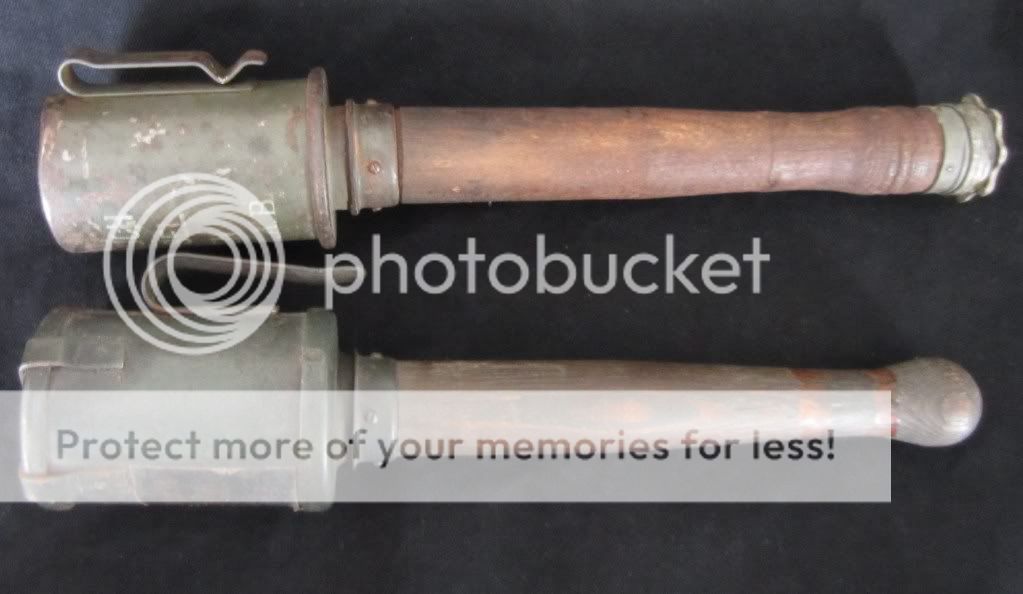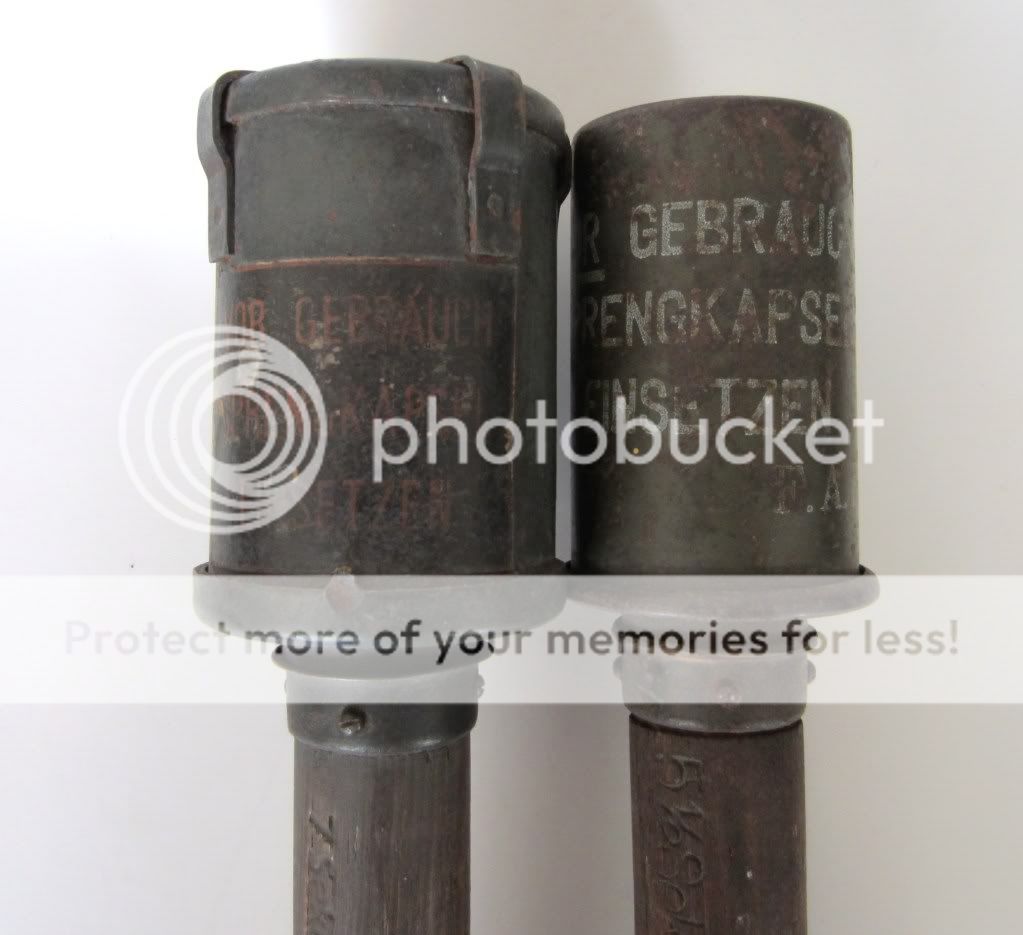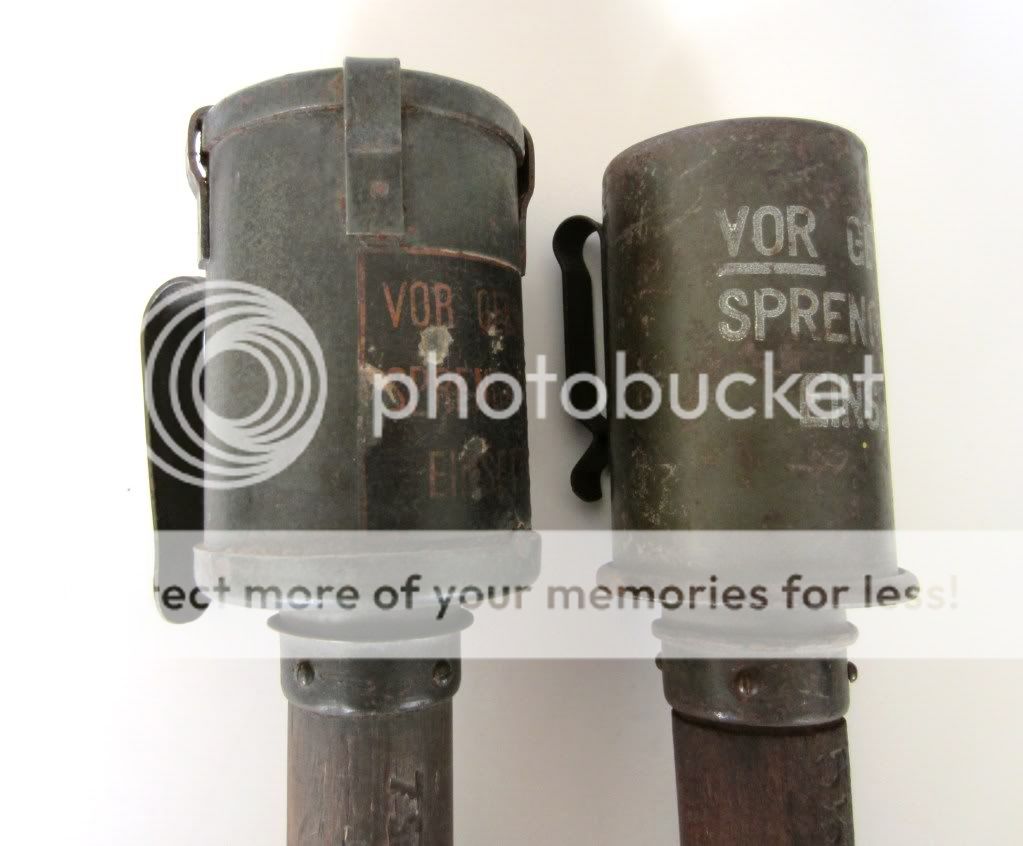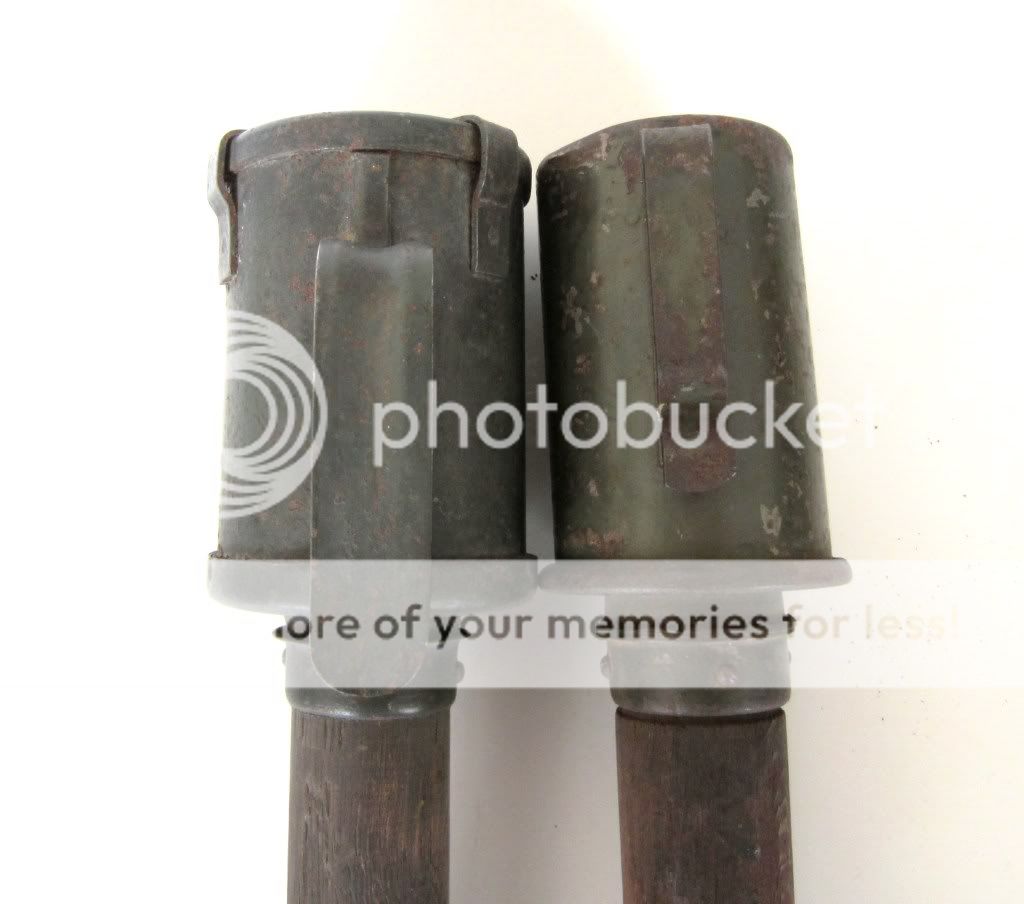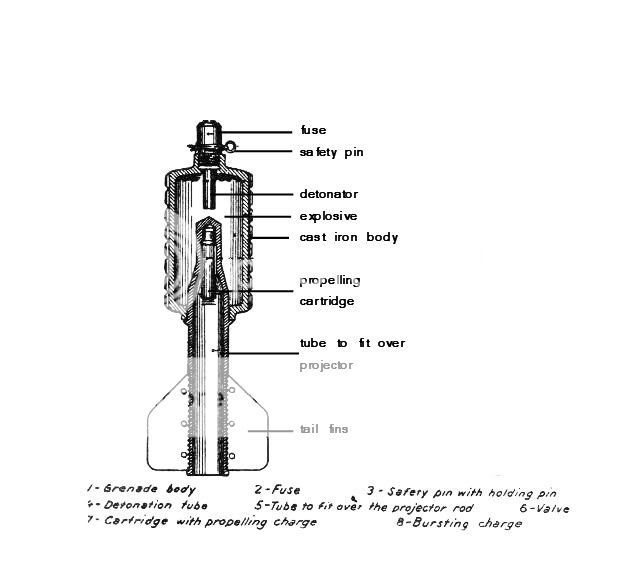Stahlhelm
Active member
Stiehlhandgranate mit Brennzünder, introduced in 1915. From what I've been able to find out, this model (with this particular canister and the 7 second fuse) is apparently the very first manufactured version of the friction fuse variant of Stielhandgranate. It's in surprisingly good condition with most of the original paint and even the paper label. The handle has the remains of the lacquer that covered the paper wrap of the pull cord loop.
Any further information on these would be very welcome. I haven't been able to locate other examples of this exact type for comparison.
Hans
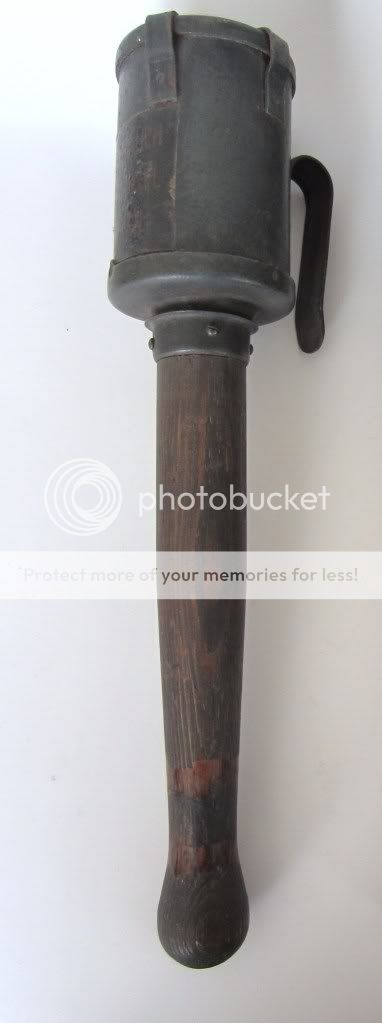
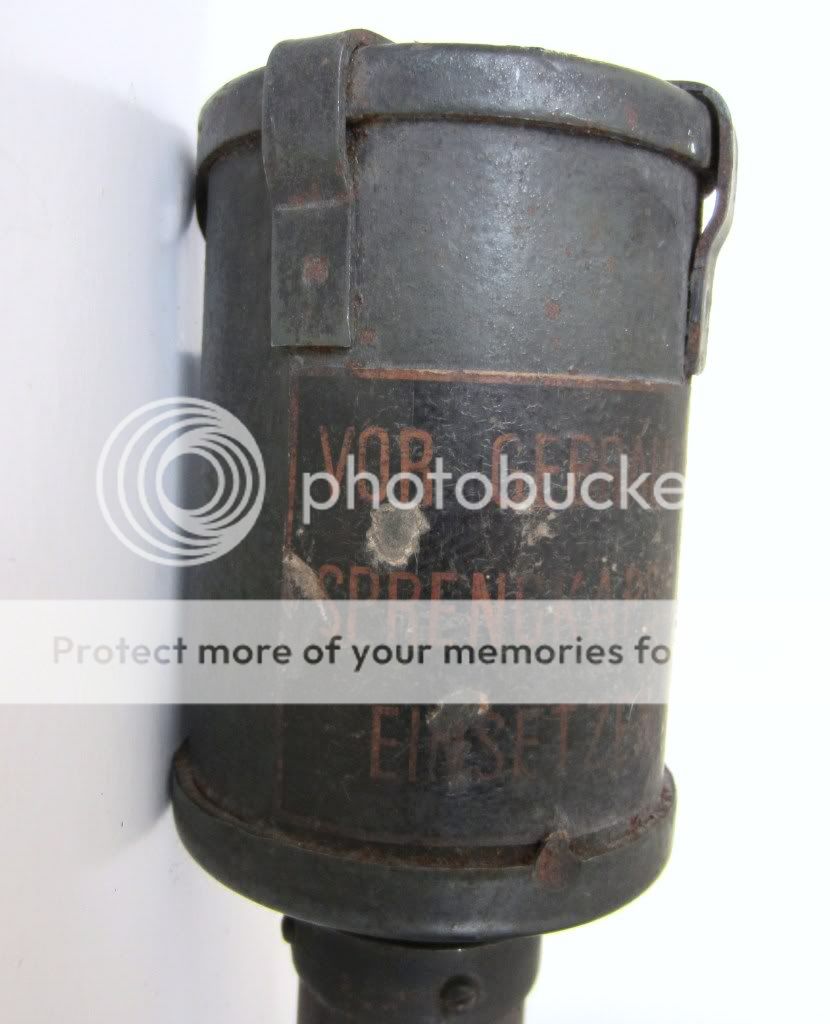
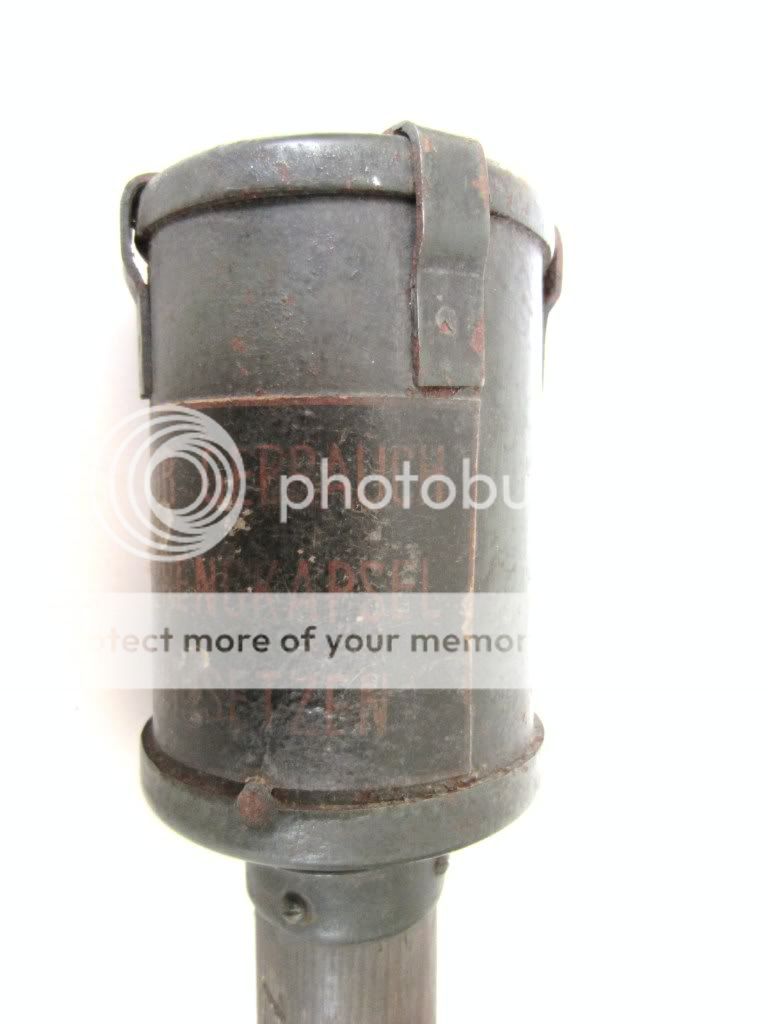
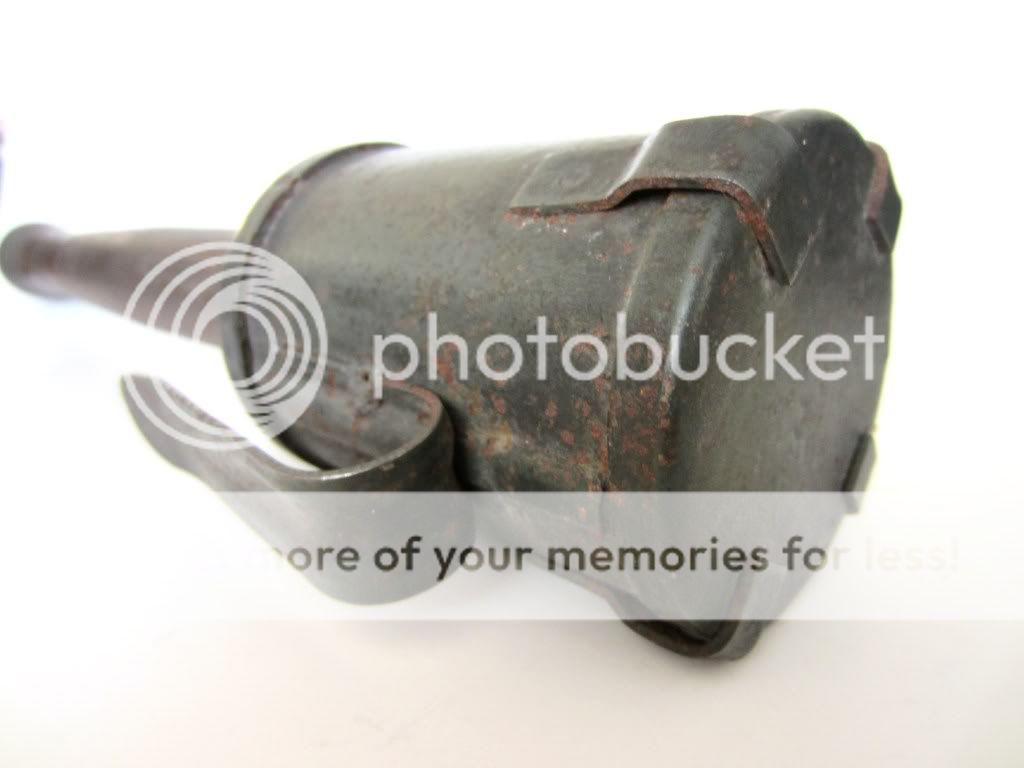
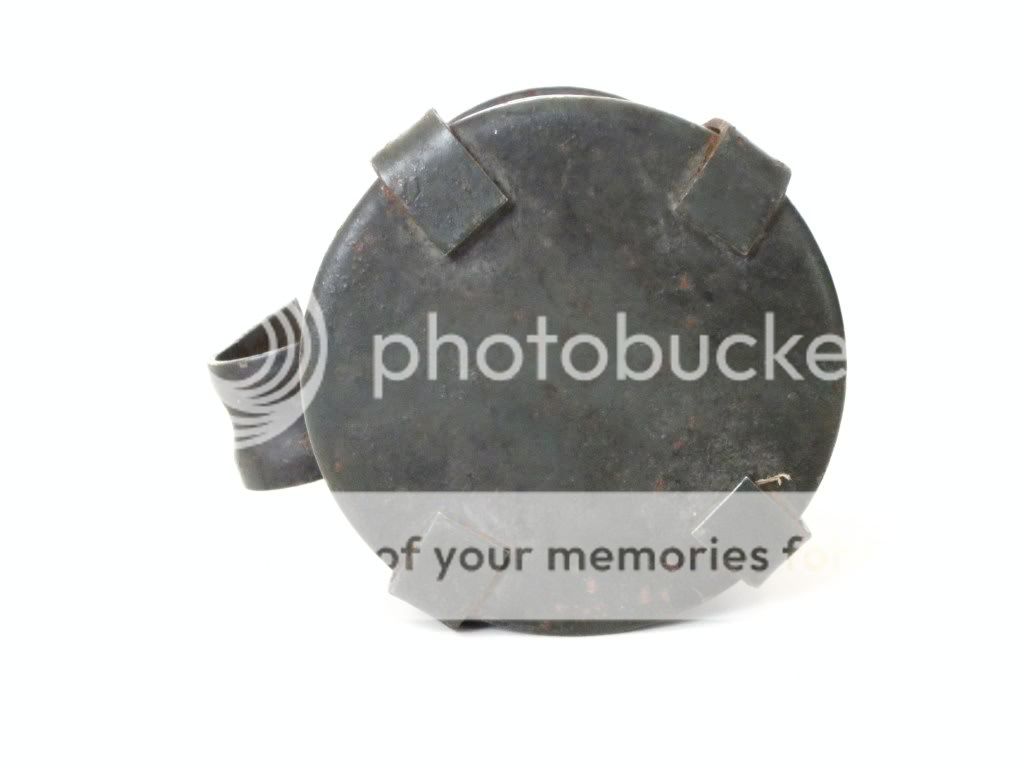
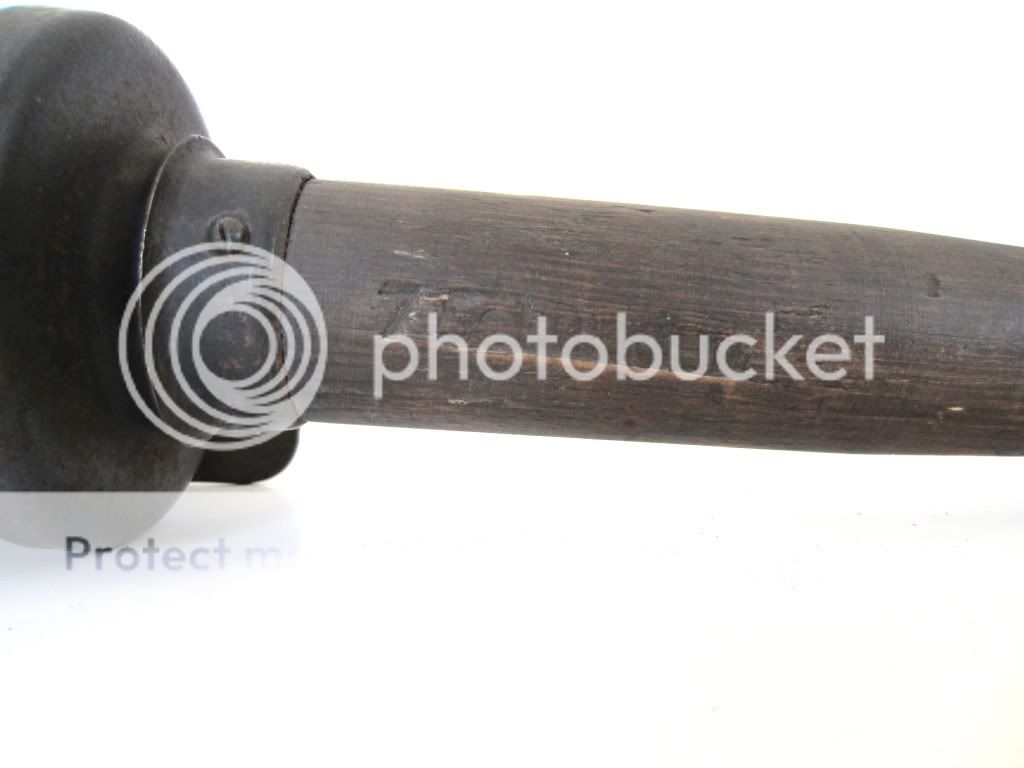
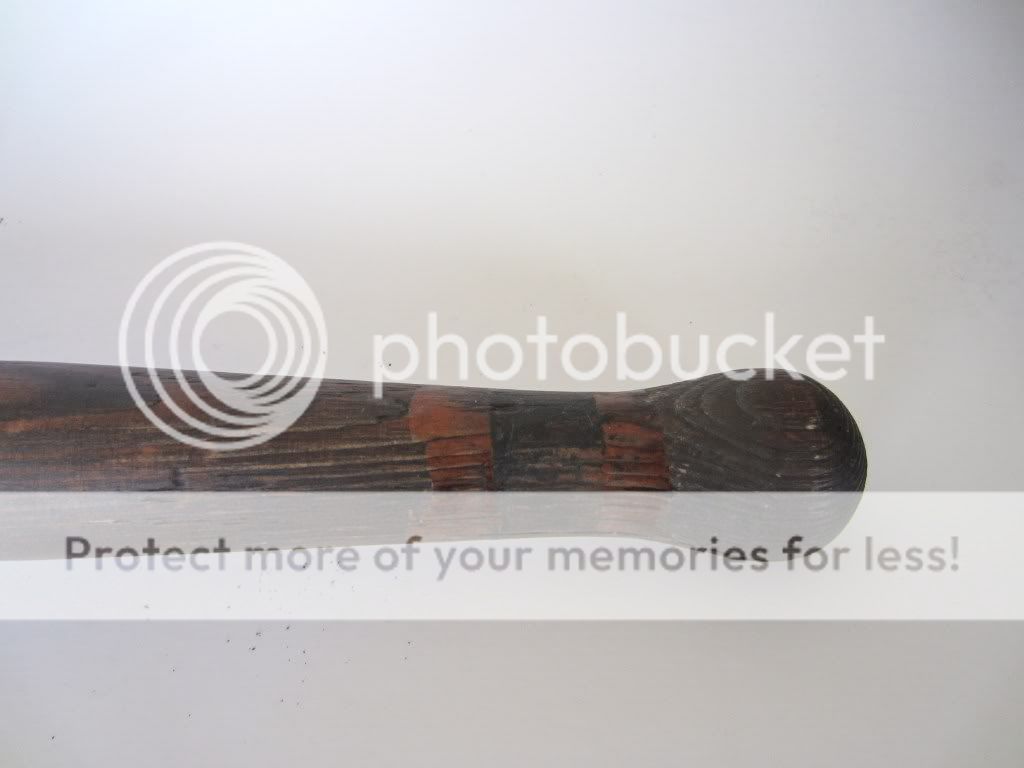
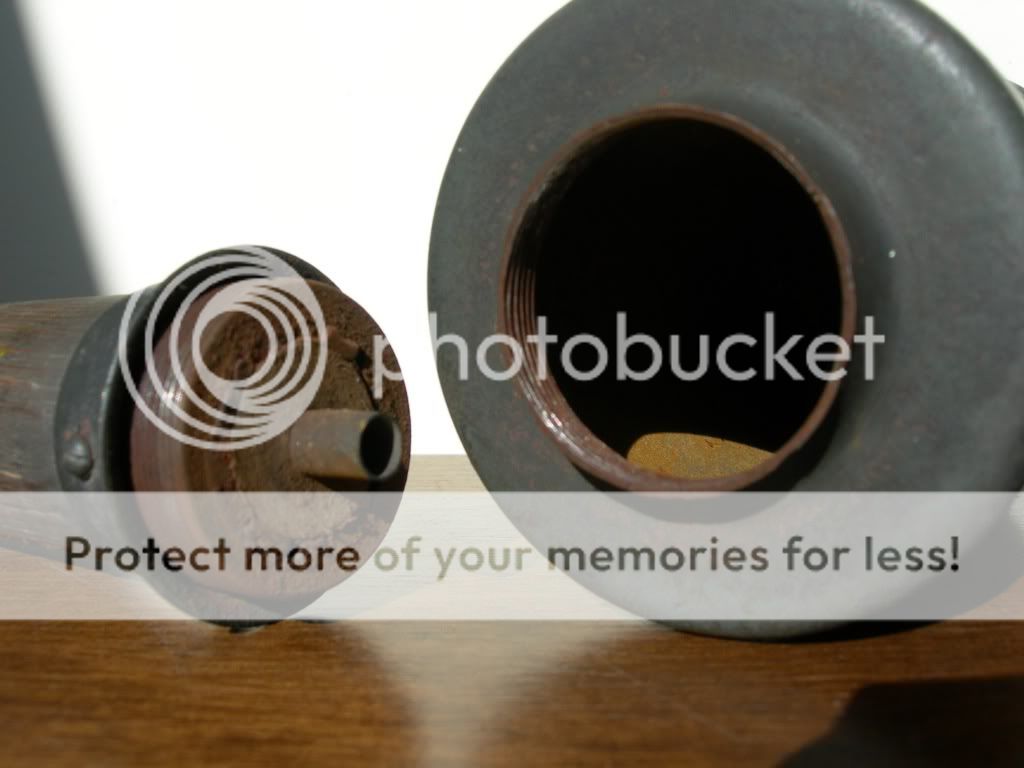
Schematic of this grenade:
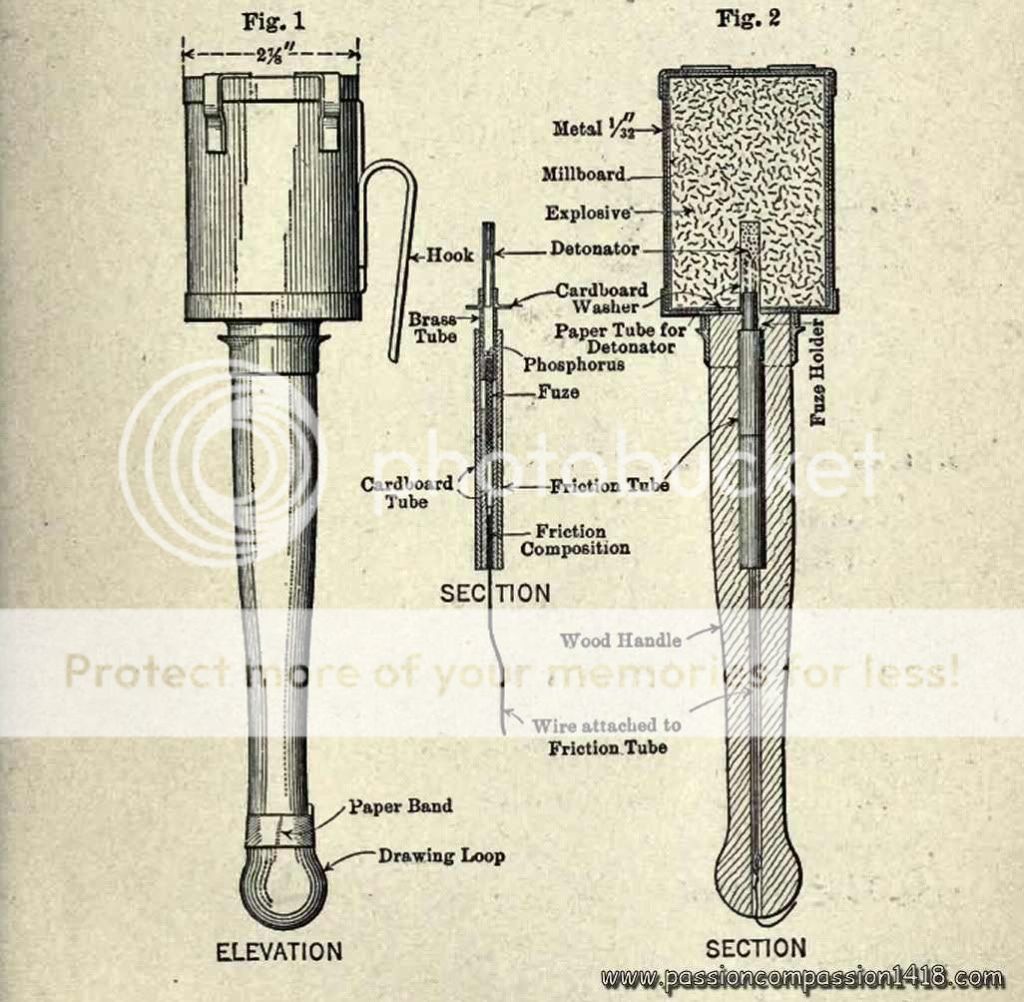
Any further information on these would be very welcome. I haven't been able to locate other examples of this exact type for comparison.
Hans








Schematic of this grenade:


